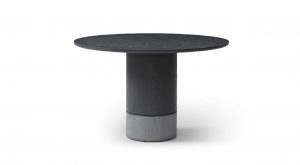Featured Post
Caring for Wooden Furniture
Comprehensive Guide to Caring for Wooden Furniture
Wooden furniture can add warmth, style, and a timeless aesthetic to any home. However, to maintain its beauty and functionality, furniture care for different materials, particularly wood, is essential. This guide will help you understand how to properly care for wooden furniture, ensuring that it lasts for generations.
1. Understanding Wood Types
Not all wood furniture is created equal. The type of wood plays a significant role in how you should care for it.
Hardwood vs Softwood
Hardwoods, such as oak, walnut, and cherry, are known for their durability and rich grain patterns. They require specific maintenance to avoid scratches and preserve their natural shine. Softwoods, like pine and cedar, while beautiful, are more prone to dents and require gentler handling.
Engineered Wood Options
When it comes to furniture care for different materials, engineered woods like MDF and plywood are common. These materials have a veneer finish, meaning extra caution is required to prevent peeling or warping. Avoid soaking engineered wood and use a light hand when cleaning.
Natural Wood Characteristics
Natural wood has unique characteristics, including color changes over time. For example, cherry wood darkens with exposure to light, and walnut can lighten. Understanding these changes will help you set proper expectations for your furniture's aging process.
2. Daily Cleaning and Maintenance
Maintaining your wooden furniture daily ensures longevity and prevents long-term damage.
Safe Cleaning Agents
Avoid harsh chemicals when cleaning wooden furniture. Opt for natural products like mild dish soap mixed with warm water. Be sure to test any new product on a hidden area before applying it to the entire surface.
Dusting Techniques
Dusting is crucial for keeping your furniture looking its best. Use a soft, lint-free cloth, or even better, a microfiber cloth. Move in the direction of the grain to avoid creating scratches.
Preventing Scratches and Dents
To prevent scratches and dents, always lift heavy objects rather than dragging them across the surface. Use felt pads under decorative items and regularly inspect furniture for any developing damage.
3. Long-Term Preservation Strategies
Beyond daily cleaning, long-term care practices will help your wooden furniture stand the test of time.
Polishing and Oil Treatments
Polishing wooden furniture can enhance its natural beauty. Use a quality wood polish or a mixture of lemon oil and olive oil to keep the wood nourished. These treatments not only bring out the grain but also help protect the surface from drying out.
Humidity and Temperature Control
Wood is highly sensitive to changes in humidity and temperature. For optimal care, maintain a consistent environment. Excessive humidity can cause wood to swell, while dry conditions can lead to cracking. Consider using a humidifier during the dry winter months to avoid these issues.
4. Dealing with Stains and Damage
Inevitably, your furniture will encounter wear and tear. Knowing how to deal with common problems like stains and scratches will keep your pieces looking pristine.
Water Stain Removal
Water stains are a common issue, especially on dining tables. To remove them, try using a mixture of baking soda and water. Rub the paste gently over the stain, then wipe clean with a damp cloth. For deeper stains, consider using a mild abrasive like toothpaste.
Repairing Scratches and Chips
For small scratches, a walnut can work wonders! Rub the nut over the scratch in the direction of the grain, and the natural oils will help conceal the damage. For deeper chips, consider using wood filler that matches the furniture's color, then lightly sand and refinish the area.
By following these tips, you can extend the life of your wooden furniture, ensuring it remains beautiful for years to come. Whether you're caring for a delicate antique or modern engineered wood, these strategies will help you maintain the charm and durability of your pieces. As always, furniture care for different materials is about understanding your furniture’s specific needs and adapting your care routine accordingly.









